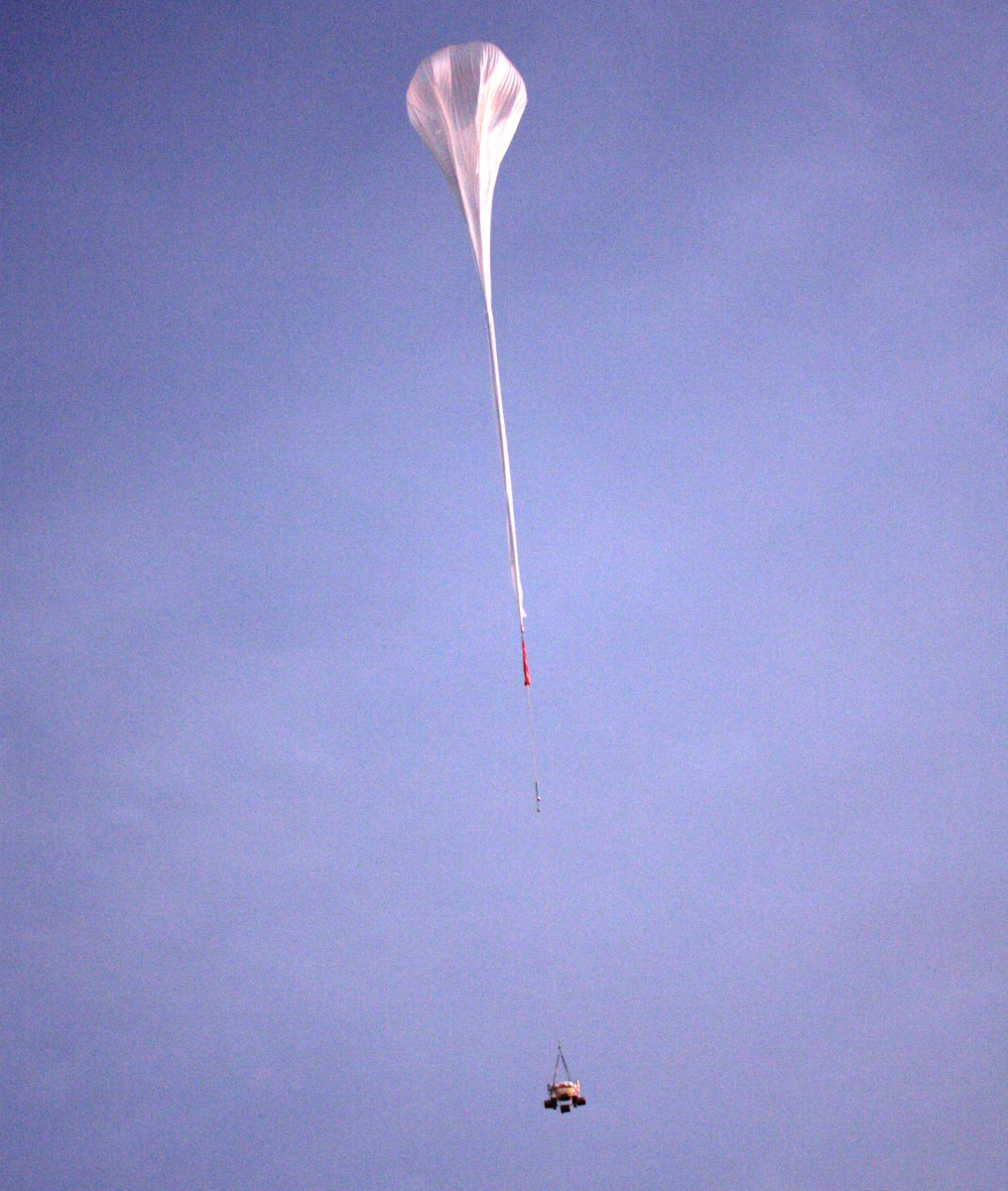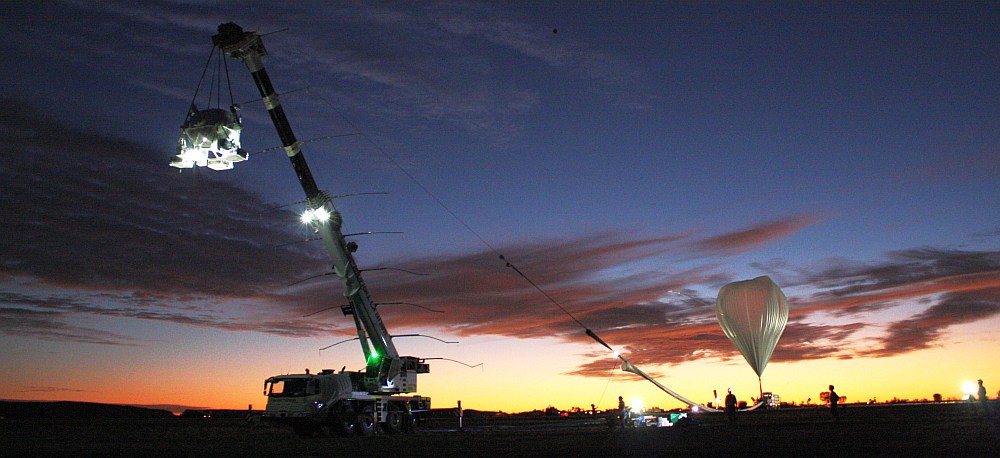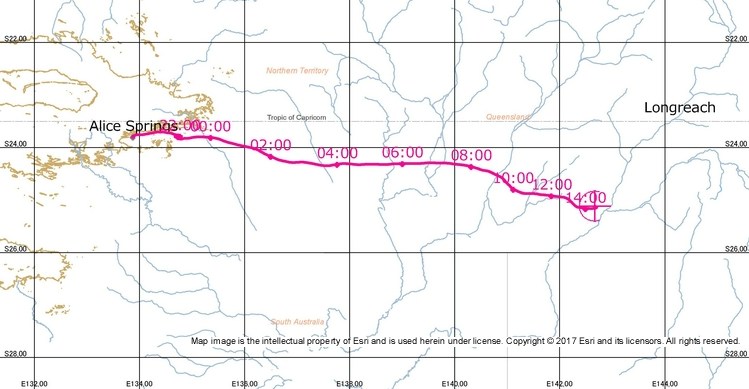News Archive
Image of the launch
The image below, as well the other ones included in the article were published by JAXA on its Japanese website

-
May 2 2018
Second balloon launch in Australian campaign
Alice Springs, Australia.- The second balloon of the 2018 launch campaign that the Japan Aerospace Exploration Agency (JAXA) is carrying out since late March at the Alice Springs Airport, was completed successfully as mission B18-03 on April 26.
The balloon used this time was smaller than the one used on the first mission. It was a B-300 model, also fabricated by Fujikura Parachute Co. Ltd. of Japan but measuring 300.000 cubic meters of volume, which equals to a diameter of 88 meters when fully expanded at flight level. The launch was carried out at 6:33 local time and after an ascent phase of near two hours, the balloon reached a float altitude about 38 km.

The balloon transported an instrument denominated GRAINE (Gamma-ray Astro-Imager with Nuclear Emulsion) which is a gamma ray balloon-borne telescope that uses nuclear emulsions to determine incident gamma-ray angle measuring electron positron tracks. The objective of GRAINE is to make precise observations of gamma-ray sources especially on the galactic plane by repeating long-duration flights.
In May 2015, JAXA performed the first launch of the instrument with a down-sized version of it. The mission -which was also performed from Alice Springs- was meant to demonstrate the overall imaging performance of the apparatus. This year flight involved a payload similar in size than the one flown in 2015, but with several upgrades. GRAINE is a development of the Kobe University along with Nagoya University, ISAS/JAXA, Aichi University of Education and Okayama University of Science.
Unlike occurred with the first mission which caused quite a stir in the vicinity of the launch base, as the sky over Alice Springs on April 26 was overcast, the drifting of the balloon was unnoticed by most of the population. Once at float altitude the balloon followed an eastward flight path that took it to Queensland during the rest of the day. Once there, near midnight, was sent a command that separated the balloon from the payload. The instrument landed with no damage in a point located 10 kilometers north of the small town of Windorah, in Queensland. Below these lines we can see a map of the balloon displacement. Total flight time from launch to separation was of 16 hours and 44 minutes.

After this succesful mission, the last experiment to be flown is FITE (Far-Infrared Interferometric Telescope Experiment). Built by a collaboration between the Infrared Astronomy Group of the Osaka University, along with Nagoya University and JAXA, its goal is to achieve observations in the Infrared with high spatial resolution of 1 arcsecond at the wavelength of 100 micrometers. FITE is composed by a Michelson stellar interferometer, and is able to realize a long base line beyond the size of the collecting mirror by using four plane mirrors.
The first balloon flight for FITE was scheduled for December 2010 from the balloon base of INPE in Cachoeira Paulista, Brazil, but was finally cancelled due to technical issues and persisting bad weather.
Stay tuned to StratoCat for more information on the campaign.
(Many thanks to JAXA by the images and information provided.)
-
Share this on social media


